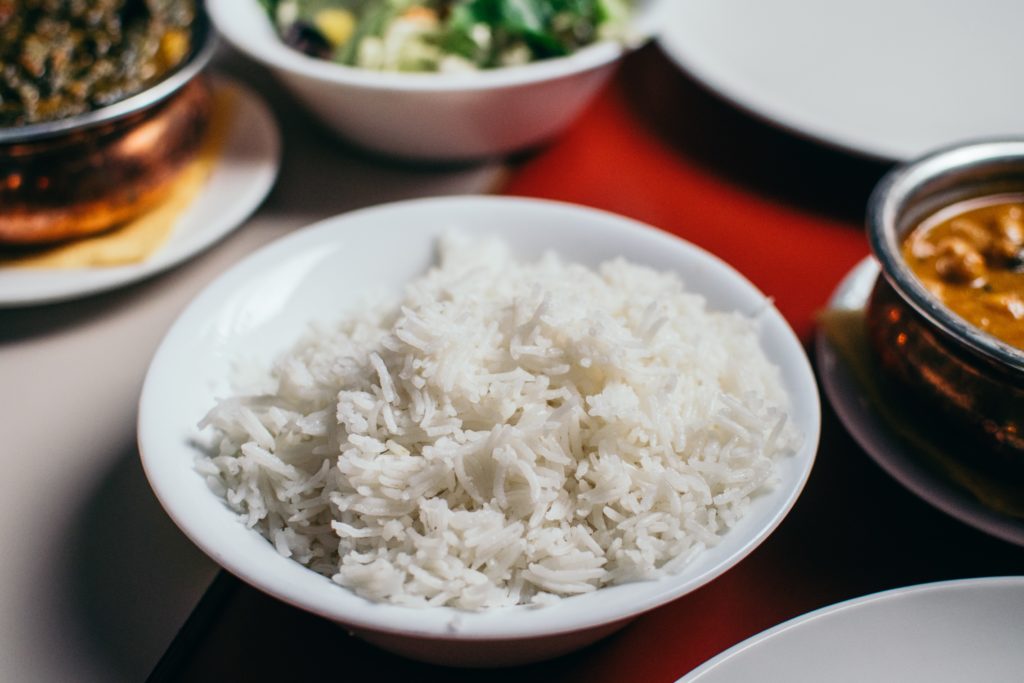One of the most popular food items in the world, rice is a staple for more than half the world’s population and might just be in your cupboard right now. An inexpensive source of calories, this plant-based grain absorbs flavors and balances the spicier foods it is often paired with.
But rice absorbs much more than flavors. It also absorbs the deadly carcinogen, arsenic. In fact, it absorbs more arsenic than any other food source – 10x more than other cereal crops. That doesn’t mean you should avoid eating rice altogether, it just means you need to know the tips and tricks of limiting your exposure to this chemical element.
The Arsenic-Cancer Connection
According to a study published in Biomolecules, “arsenic has long been implicated in DNA repair inhibition, cell cycle disruption, and ubiquitination dysregulation, all negatively impacting the DNA damage response and potentially contributing to both the carcinogenic and chemotherapeutic potential of arsenic.” In other words, arsenic is a known carcinogen.
Classified as a Class I human carcinogen by the International Agency of Research on Cancer (IARC), arsenic is associated with various types of cancer, including bladder, kidney, liver, prostate, lung, and skin cancers. Of these, skin cancer is the most common result of excess arsenic exposure, and lung cancer is the most deadly.
In addition to its cancer connection, arsenic exposure is also associated with cardiovascular diseases, developmental abnormalities, neurologic and neurobehavioral disorders, diabetes, hearing loss, anemia, leukopenia, and eosinophilia.
Symptoms of Arsenic Toxicity
Cancer takes time to develop, and so knowing the early warning signs of possible arsenic toxicity are important. What should you look for?
According to renowned nutritionist Ann Louise Gittleman, these are some of the early warning signs:
- Horizontal white bands or longitudinal brown bands on fingernails and toenails
- Skin discolorations
- Diarrhea
- Vomiting
- Nausea
- Peripheral nerve damage
- Respiratory problems
- Deafness
- Memory Loss
- Confusion
- Uncoordinated movement
- Visual problems
Which Rice Contains the Least Amount of Arsenic?
According to studies conducted by Consumer Reports, measurable levels of arsenic were found in nearly all of the 60 rice varieties and rice products tested.
They also reviewed FDA data concerning the inorganic arsenic content of 656 products that contained processed rice. The results? One serving of either rice cereal or rice pasta exceeded the maximum amount recommended for children in one week! After reaching that determination, Consumer Reports adjusted their recommended daily allowances. They further concluded that rice drinks should not be consumed by children.
It was determined that white basmati rice from California, India, and Pakistan and sushi rice from the U.S. contain the least amount of arsenic (according to Consumer Reports). Avoid rice grown in Texas if you can, as it is reported to contain some of the highest levels of arsenic.
In addition, the rice you cook may contain up to 82% less arsenic if you know how to prepare it properly.
Tips and Tricks for Reducing Arsenic Levels
The good news is that you can reduce the arsenic level when you prepare rice if you follow a few simple instructions. Ann Louise Gittleman, along with Consumer Reports, has some great tips for reducing your exposure to arsenic:
- Limit your intake of rice-based products including rice crackers, cereals, rice milk, and foods sweetened with brown rice syrup.
- Check your sources — as mentioned above, rice from different regions contain varying levels of arsenic.
- Mix it up – consider alternating rice with other grains with lower arsenic levels, like buckwheat, millet, and quinoa.
- Have your water tested to be sure you aren’t inadvertently taking in excess amounts of arsenic (and other unwanted toxins). A good source for reliable testing and home water filtration systems is Clean Water Revival, Inc.
- Learn to cook rice with a simple technique and reduce the arsenic it may contain.
Insider Tip:
You can decrease the amount of arsenic in rice by up to 82% with a simple adjustment in the way you prepare it:
- Soak rice in water overnight. It opens up the grain’s structure and allows arsenic to escape into the liquid (Anya Vien)
- Drain and rinse pre-soaked rice.
- Cook one part rice to five parts water (ex: 1 cup rice with 5 cups water)
- Drain excess water before serving.
References available upon request.

